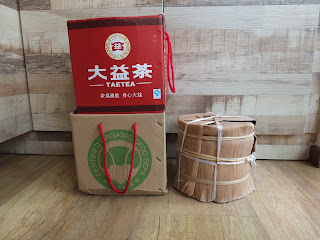Ripe or shou pu erh tea is my 'turn to' tea in the evenings when I have a tea session. The earthy, aromatic smoothness of the tea remains one of my favorite Chinese tea. I had not been blogging about ripe tea in the recent months as I had been revisiting and opened ripe cakes and bricks which I had written in this blog over the years.
I recently opened a 2006 Mengku ripe brick. I enjoy the signature taste of Mengku ripe pu erh and I had broken up this brick into my tea caddy and allowing it to 'breathe' for 2 weeks before drinking the tea. The terminology here is 'xin cha' (aka awaken the tea). I would also urge you, the reader, to try brewing with boiling water and adding a bit more leaves. I had been chatting with a few new friends via email and discovered that the water used by my friends was not very hot. They either used a thermos or a kettle of hot water that should preferably be boiling or reboiled in later infusions. Boiling water does makes a difference in brewing pu erh (raw and ripe). The flavor and aroma of the tea 'comes out' better.
Brewing this ripe tea with slow boiling water could get me about 8 good strong infusions. There are 3 things I look for in a ripe pu erh tea - smoothness, sweetness and mellowness. This 10 year old brick passed with flying colors.






